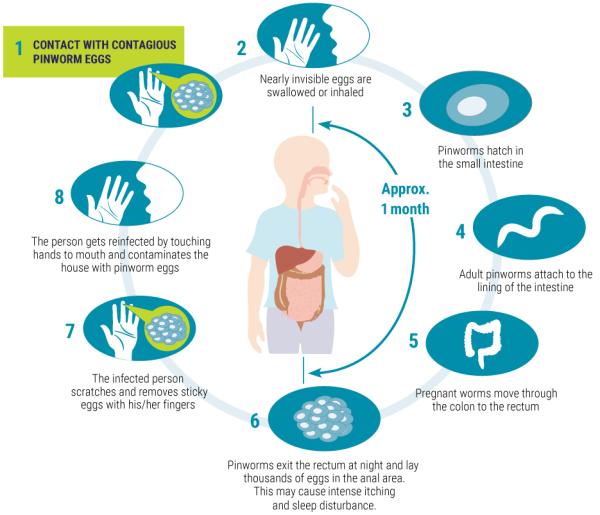Demystifying Pinworms - A Common Nuisance in Childhood | |||
 1,320 1,320  0 0  0 0 | |||
| Pinworms, scientifically known as Enterobius vermicularis, are tiny, white intestinal worms that measure about a quarter of an inch in length. Identifiable by their appearance, akin to dental floss, these worms are often observed around the anus and in stool. While the discovery of pinworms in your baby may be disconcerting, it's important to note that this common childhood ailment is not an indicator of poor hygiene.
Contrary to misconceptions, pinworms pose no significant health risks. Unlike lice, these intestinal invaders are easily eradicated with appropriate treatment. It's crucial for parents to understand that pinworms are a part of the normal spectrum of childhood infections and don't reflect any shortcomings in hygiene practices. The telltale signs of pinworm infestation include the presence of these small worms in the perianal region or noticeable in the stool. While the idea of intestinal parasites may be unsettling, prompt and effective treatment can eliminate them without causing any lasting harm. So, if you suspect pinworms, consult with your child's healthcare provider for guidance on the best course of action, reassuring yourself that this is a manageable and temporary challenge in your child's health journey. Pinworms are the most common intestinal parasite in the United States and many other parts of the world. Adult female pinworms are about the size of a staple, while males are smaller. They live in the large intestine and rectum.
The Life Cycle – Understanding the Itch: The characteristic symptom of pinworms – intense anal itching, particularly at night – is directly linked to their life cycle. At night, the female worm migrates out of the anus to lay her eggs in the surrounding skin. This egg-laying causes the intense itching. Scratching then transfers the eggs to fingers, bedding, clothing, and other surfaces. These eggs are microscopic and highly resistant to drying.
Symptoms: The most common symptom is intense anal itching, especially at night. Other possible symptoms, though less frequent, include:
Diagnosis: Diagnosis is typically made through a "tape test." This involves pressing a piece of clear cellophane tape against the anal area in the morning before a bowel movement or bath. The tape is then pressed onto a microscope slide and examined for eggs. Multiple tests might be necessary to confirm the diagnosis.
Treatment: Pinworm infections are easily treatable with over-the-counter or prescription medications. The most common medications are broad-spectrum anthelmintics. Always consult a doctor or pharmacist before starting any medication, especially for children.
Prevention: Preventing pinworm infections involves good hygiene practices:
Important Note: A single treatment is usually sufficient, but the entire household may need treatment to prevent reinfection. It's essential to follow the doctor's instructions carefully regarding medication and hygiene practices to ensure complete eradication of the infection. Recurring infections are common, often due to re-ingestion of eggs from the environment. Pinworms are a common childhood ailment that's easily treated and prevented. Understanding their life cycle and practicing good hygiene can significantly reduce the risk of infection and ensure a quick recovery. Tags: Enterobius vermicularis Parasite Pinworms 기생충 | |||
| |||
| | |||
|
 3224
3224 
